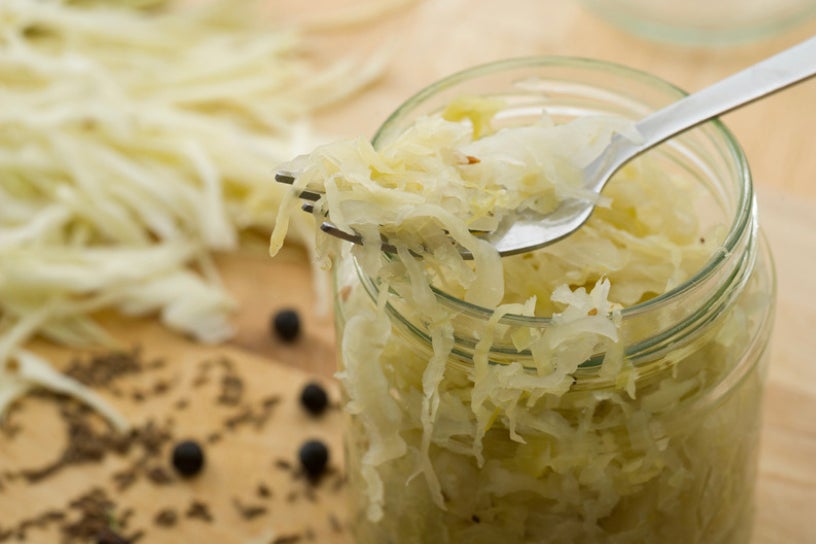Sauerkraut is a fermented cabbage dish hailing from Germany. Fermentation is a process by which the naturally-occurring sugars in the cabbage are converted into lactic acid by bacteria that are also naturally-occurring on the cabbage and in the air. In the case of making sauerkraut, salt is used to keep "bad" bacteria at bay, while allowing lactic-acid-producing bacteria to stick around. Sauerkraut, like other fermented foods (yogurt, kimchi) is rich in probiotics, which are beneficial for gut health. It tastes delicious mixed into grains or salads, on tacos, or even with scrambled eggs.
This recipe yield 1 quart, or about 4 cups of sauerkraut. You will need either 2 pint-sized mason jars, or 1 quart-sized mason jar
Ingredients
Instructions
Notes
*Note that the serving size is 2 Tablespoons, which has 340 mg of salt. Reduce the serving to 1 Tablespoon if you are watching your sodium intake or have high blood pressure.

